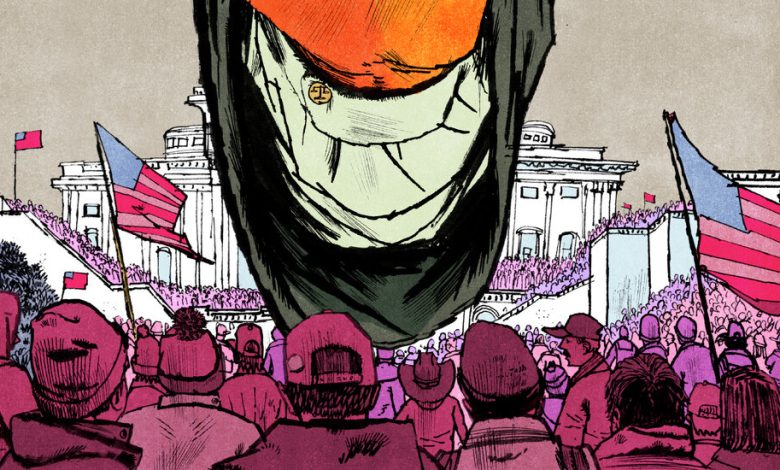Jan. 6 Rioters Should Not Catch a Break From the Supreme Court

Imagine that during a Supreme Court argument, protesters angry about the case storm the court building. The mob breaks doors and windows and assaults security officers while forcing its way into the chamber. Some shout that they want to hang the chief justice. The justices and attorneys are forced to flee for their lives. It’s several hours before law enforcement secures the building and the argument can resume.
Has the court proceeding been obstructed or impeded? That doesn’t seem like a difficult question. But that’s essentially what the Supreme Court heard debated in arguments last week in Fischer v. United States, a case challenging a law being used to prosecute hundreds of people, including Donald Trump, for the events of Jan. 6, 2021.
Joseph Fischer is charged with being part of the mob that rioted at the Capitol, forcing members of Congress to flee and disrupting the electoral vote count. Along with assaulting police officers and other charges, he is charged under 18 U.S.C. 1512(c), which provides:
Prosecutors charge that by participating in the Capitol riot, Mr. Fischer corruptly obstructed and impeded the joint congressional proceeding to certify the election, in violation of 1512(c)(2). More than 300 other Jan. 6 rioters have faced the same charge. In the D.C. federal indictment of Mr. Trump, two of the four counts also rely on this statute, alleging that through his actions leading up to and on Jan. 6, he conspired to and did obstruct the congressional proceeding.
Jan. 6 defendants have repeatedly challenged the use of 1512(c) in their prosecutions. More than a dozen federal judges in Washington have rejected those challenges. But in Mr. Fischer’s case, a Trump-appointed judge, Carl Nichols, concluded the statute must be limited to obstructive acts involving documents, records or other objects. Because Mr. Fischer wasn’t charged with impairing the availability or integrity of any physical evidence, Judge Nichols dismissed the charge.
Prosecutors appealed. The U.S. Court of Appeals for the D.C. Circuit reversed and reinstated the charge, with one judge — also a Trump appointee — dissenting. The Supreme Court is reviewing that decision.
The language of the statute seems clear. Subsection 1 prohibits obstructing a proceeding by tampering with physical evidence, and Subsection 2 is a catchall, backstop provision that prohibits “otherwise” obstructing a proceeding by means not encompassed by Subsection 1. Connected by the word “or,” they define alternative ways to violate the statute. You have to struggle pretty hard to find any ambiguity here.
